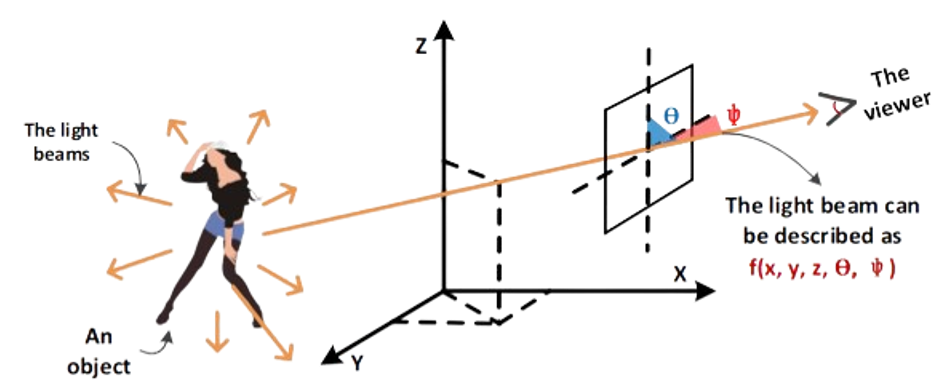About
Motivation and Background
While 2D displays are commonplace, advancements in display technology have allowed us to add a third dimension to the experience. 3D displays produce light patterns intended to excite the eyes in a way that mimics the way light from the same object would in the real world. One type, light field displays, generally produces multiple, simultaneous images by simulating an object’s light field in reference to a viewer’s viewing angle (as illustrated in Figures 1 and 2 [4]). By doing this, the display can show many angles of an object or scene, making it able to show captivating, 3D volumetric video content that supports natural depth perception. It’s novelty and recent availability as a consumer product brings some challenges. First, there is a lack of strong software infrastructure to support it. Second, there is very little actual light field content - with very little devoted to education. And third, practical deployment in a museum requires a workflow and format suited to the setting. Shown in Bovier et. al’s text, related work has explored holographic displays used in disseminating cultural heritage information [1]. Holography provides a more realistic environment that can immerse students or trainees by being able to see an object from multiple views.
 |
 |
| Figure 1: Illustrates a traditional 2D image formation that only captures light off an object in one direction. | Figure 2: Shows how a light field display can simulate rays in multiple directions. within a three-dimensional space. |
Approach
Using a Design-based research approach, we begin to address the following questions in an iterative fashion to ultimately drive towards answers for how to effectively use this emerging technology in education.
- Does the integration of a light field display in a museum gallery increase engagement for museum visitors?
- What content and experience elements of incorporating a light field display are more effective at increasing user engagement?
- What aspects of an effective light field display in a museum exhibit create obstacles for widespread deployment in museum settings in practice?
- What actions, materials, tools or workflows can mitigate those obstacles to increase practical access to light field displays for museum visitors?